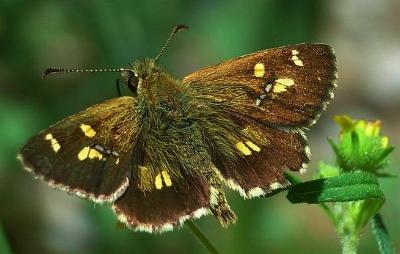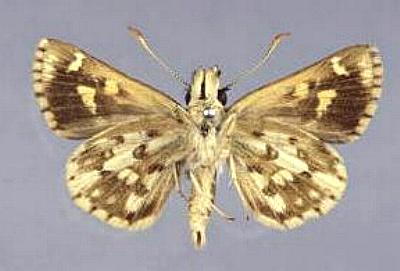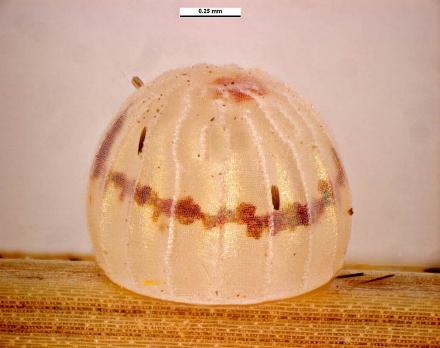
| Montane Grass-skipper (previously known as Hesperilla monticolae) TRAPEZITINAE, HESPERIIDAE, HESPERIOIDEA | (donherbisonevans@yahoo.com) and Stella Crossley |

male
(Photo: courtesy of Martin Purvis,
Sydney, New South Wales)

| Montane Grass-skipper (previously known as Hesperilla monticolae) TRAPEZITINAE, HESPERIIDAE, HESPERIOIDEA | (donherbisonevans@yahoo.com) and Stella Crossley |

male
(Photo: courtesy of Martin Purvis,
Sydney, New South Wales)
This Caterpillar is greyish-green, with dark line along the back and along each side. The head is brown edged with black. The caterpillar feeds nocturnally on
By day it rests in a shelter of silk and leaves at the base of the foodplant.
Pupation occurs in the shelter. The pupa is brown, secured head upward by cremaster and girdle. It is covered in a white waxy powder.
The upper side of the adult butterfly is dark brown with a number of pale yellow spots on each wing. Each wing also has a chequered border.

Underneath, the wings are fawn with pale yellow patches under each wing. The males have a sex brand consisting of a grey line across part of each forewing. The wing span is just over 2 cms.

The eggs are shaped like tall domes, with 17 or so vague ribs. The eggs are off-white, developing coloured markings as hatching approaches, The eggs have a diameter of about 1 mm, and a height of about 1 mm. They are laid singly on a leaf or stem of a foodplant.
The species is found in the Dividing Range in
Further reading :
Michael F. Braby,
Butterflies of Australia,
CSIRO Publishing, Melbourne 2000, vol. 1, pp 118-119.
Arthur Sidney Olliff,
On Rhopalocera from Mt. Kosciusko, New South Wales,
Proceedings of the Linnean Society of New South Wales,
Series 2, Volume 4, Part 3 (1890), p. 624, No. 19.
 caterpillar |  butterflies |  Lepidoptera |  moths |  caterpillar |
(updated 30 April 2008, 11 September 2025)